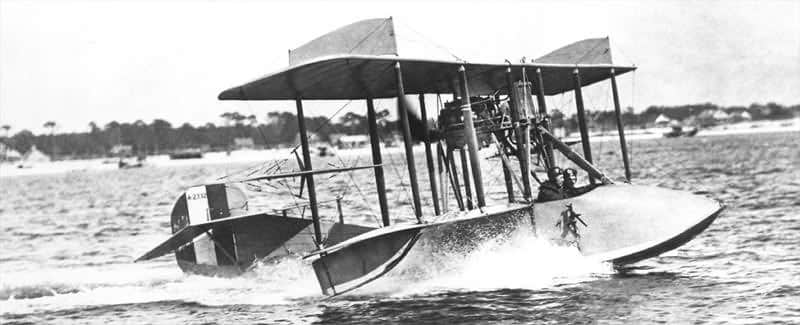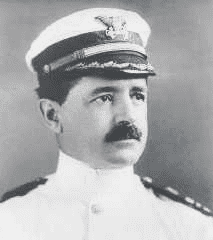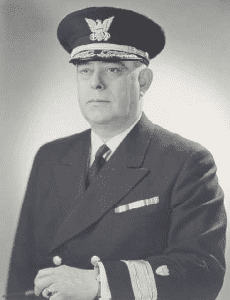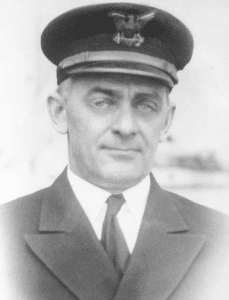
Rendering assistance to vessels in distress was not a specific mission of the Revenue Cutter Service until 1832 when the Secretary of the Treasury Louis McLane directed several cutters to actively cruise solely for that purpose. Revenue Cutters were kept busy searching for and assisting vessels in distress, hauling in derelicts, and blowing up menaces to navigation. Most of these incidents occurred during the winter. By 1837 a specific “Winter Cruising Schedule” was maintained and the cutters were continuously at sea, cruising an assigned area from about the middle of November well into the spring except for those periods required to replenish supplies and fuel. Originally conducted along the Atlantic seaboard, primarily in response to the schooner trade to and from the Caribbean, the area of responsibility continued to expand and as a matter of course the task of assisting distressed vessels of all types encompassed the Great Lakes, the Gulf Coast, Pacific Coast, and Alaska. Vessels in trouble at sea had to be searched for – the sea is vast – and time was of an essence. This then was the background for the need of Coast Guard aviation. Aircraft in their infancy did not have the all weather capability they do now but an airplane, in weather that would allow it to fly, could effectively search enormously greater areas in much less time than a cutter.
Two visionaries, 3rd Lieutenant Elmer F. Stone and 2nd Lieutenant Norman B. Hall assigned to the USCGC Onondaga under the command of Captain Benjamin M. Chiswell recognized the potential of aerial search. They saw clearly the benefit of utilizing aircraft to assist vessels in distress and to search for disabled vessels and obstructions to navigation and enlisted the assistance of their commanding officer. With the full backing and active participation of Captain Chiswell the next step was to evaluate the feasibility of the concept. What was needed was an airplane to run a series of tests with the Onondaga demonstrating the value of aircraft in Coast Guard operations. The Onondaga was based at Hampton Roads, Virginia near Newport News, Virginia where Glenn H. Curtiss had set up the Curtiss Aeroplane and Motor Company Flying School at Boat Harbor Point. An evaluation plan was formulated and in early March Chiswell, Hall, and Stone presented their plan to Glenn H. Curtiss and the head of the flying school Captain Thomas S. Baldwin.
Captain Baldwin cooperated by loaning the Coast Guard a pilot and a Curtiss Model F flying boat. The tests were so promising that Baldwin offered to place a plane at Stone’s disposal for the purpose of conducting further tests. Captain Chiswell requested that Stone be assigned to aviation duty. The Captain-Commandant concurred and he issued orders with the following instructions to Captain Chiswell dated March 21, 1916.
Sir:
Referring to orders this date assigning Third Lieutenant E.F. Stone to duty in connection with aviation, copy attached, it is suggested that whatever experiments are to be made by that officer involving the cooperation of aircraft with Coast Guard cutters, you confer with him and arrange to have him act in conjunction with the Onondaga.
It is understood that these experiments will not interfere with the regular duties of the Onondaga and that the Government will be put to no extra expense thereby.
Respectfully,
E.P. Bertholf s/s
Captain Commandant
Upon a highly successful completion the tests received official approval from the Captain-Commandant. In addition the US Navy, having been apprised of the success of the tests, offered flight training to assist the Coast Guard in implementing an aviation program.
Captain Chiswell continued to lobby for Coast Guard aviation. In April the USCGC Onondaga was moored at the Washington D.C Navy Yard. During a wardroom lunch for the Assistant Secretary of Treasury and Glenn H. Curtiss, Captain Chiswell proposed “A surfboat as a flying boat with wings and a motor so arranged that it might be quickly eliminated when the boat lighted on the water and within minutes it would be an ordinary motor surfboat.” The idea was not fully practicable but the concept of a “flying lifeboat” remained part of Coast Guard aviation psyche until the retirement of the last HH-3F helicopter in 1994. Curtiss did design his B-T “Lifeboat” airplane in response to Chiswell’s request. It had a wingspan of 56’9” and a hull length of 24’11.” It was powered by two 200hp Curtiss V-2 engines and had four-bladed chain-driven propeller. It also had an internal hull-mounted motor. The wings and tail could be jettisoned if forced down at sea. It was sold to the US Navy but proved unsatisfactory. However, many of the design features were incorporated into the NC aircraft that made the First Transatlantic Flight.
In April, Captain Charles A. McAllister USCG was assigned to a new Headquarters position as Chief Engineer, Aviation Section. That August Captain McAllister drafted a tentative bill, introduced in the Senate, to provide $1,500,000 to establish an “Aerial Coastal Patrol.” This legislation was included in the Navy Deficiency Act of August 29, 1916. In addition to putting life back into Naval Aviation it contained a provision which authorized the Coast Guard to build ten air bases along the sea coasts and the Great Lakes and provide for the training of pilots at Pensacola. Thus Congress officially recognized that aviation was needed to carry out the duties of the Coast Guard. The funding for the airbases was not forthcoming but the Coast Guard did acquire an initial cadre of trained aviators and enlisted maintenance and support personnel.



